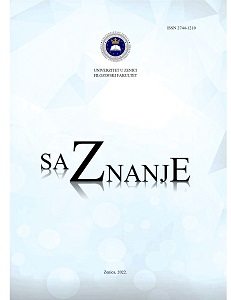IZRAŽAVANJE BUDUĆNOSTI U LATINSKOME I HRVATSKOME CRKVENOSLAVENSKOM JEZIKU
EXPRESSING FUTURE IN LATIN AND CROATIAN CHURCH SLAVIC LANGUAGE
Author(s): Dajana ĆosićSubject(s): Syntax, South Slavic Languages, Biblical studies, Translation Studies
Published by: Filozofski fakultet, Univerzitet u Zenici
Keywords: Latin; Croatian Church Slavonic; tense; future actio;
Summary/Abstract: Texts written in Croatian Church Slavonic, the first Croatian literary language, were mostly liturgical, and mainly translated from Latin. For research on the Croatian Church Slavonic language, it is usually essential to know how the future can be expressed in Latin. Therefore, this paper gives an overview of how the future can be expressed in Latin and Croatian Church Slavonic language. The goal of this paper is to notice the similarities and differences in the formation and usage of future tense and how one can express future action in these two languages. Futur, as a tense, subsequently developed in Indo-European languages – namely, most researchers think that future as a separate tense did not exist in Indo-European language – therefore, the formation of future forms differs in some Indo-European languages. While the future tense is already grammaticalized in Latin, in Croatian Church Slavonic, one can talk about future forms only tentatively. This overview of expressing future action in the languages mentioned above can be a starting point for more detailed research of the origin and development of future tense in Croatian Church Slavonic language.
Journal: saZnanje
- Issue Year: 3/2022
- Issue No: 3
- Page Range: 84-92
- Page Count: 9
- Language: Croatian

